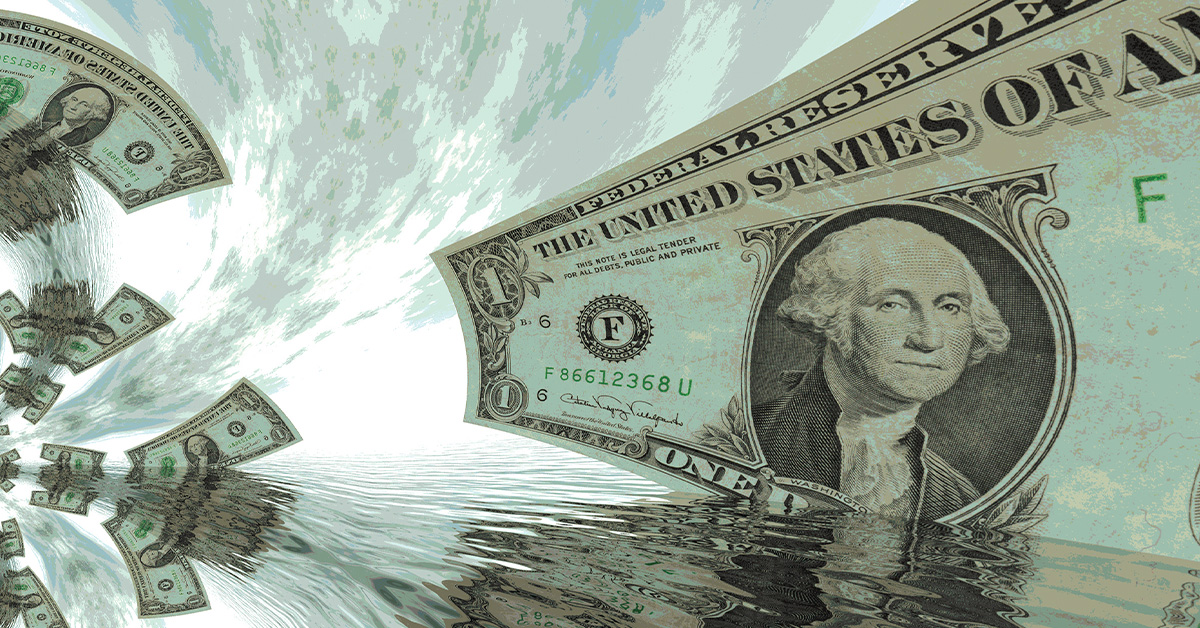It is no secret that rising interest rates have given people cause for concern of late. Borrowers seeking real estate, equipment or business financing are often confronting interest rates not seen in the past decade while those currently in adjustable-rate loans are contending with regularly rising payments.
Many commercial mortgage brokers have seen their pipelines dry up as borrowers sit on the sidelines, showing apprehension about new financing in an uncertain economic environment. Lenders too are not immune to the consequences of market conditions, as bank and nonbank lenders alike have had to tighten program guidelines and even lay off employees due to capital concerns resulting from a lack of loan demand.
“Since guarantee fees for loans up to $1 million have been drastically reduced, there is more room for a broker to earn a fee.”
Many businesses, however, are faring well despite the economic volatility. Government loans, including the 7(a) program from the U.S. Small Business Administration (SBA), give borrowers access to sensible capital. And recent changes to this program have made SBA 7(a) lending more affordable than ever, creating opportunity for mortgage brokers to build a significant revenue stream.
Nuts and bolts
SBA 7(a) loan proceeds can be used for most business purposes, including the purchase, refinance, renovation or ground-up construction of commercial real estate. The property owner’s business must occupy at least 51% of the space, or 60% for new construction projects. These loans can also be used for non-real estate business needs such as working capital, equipment, inventory, partnership buyouts, debt consolidation, business or franchise purchases, leasehold improvements, expansions and even startup expenses.
Loan sizes for the 7(a) program usually range from $25,000 to $5 million. It is not always a requirement for real estate or hard collateral to be included. These loans are provided by SBA-approved lenders, which include many banks and a select group of nonbank lenders. The smallest SBA 7(a) loan amounts are guaranteed up to 85%, meaning that the lender is reimbursed for a large portion if the borrower defaults — assuming that the lender followed the required standard operating procedures when originating and funding the loan.
To compensate the U.S. government for providing a guarantee on SBA loans, the borrower is charged a fee on the guaranteed portion of their loan at closing. This fee can be significant and equal up to 3.75% of the guaranteed portion of the loan.
The guarantee fees charged to SBA borrowers are reasonable, however, considering the favorable loan terms they can access through the program. Guarantee fees on SBA 7(a) loans are almost always financed into the loan proceeds. The borrower won’t pay out of pocket at closing but over time as part of their ongoing principal and interest payments (which are amortized out as long as 25 years, depending on the loan size and the collateral involved).
Guarantee fee waivers
Interest rates for 7(a) loans are often adjustable to a set margin above the prime rate and adjust on a set schedule. This means that in a rising interest rate environment, a borrower who takes out a new quarterly adjustable 7(a) loan could experience an elevated cost of borrowing when compared to someone who took out a similar loan in prior years.
The combination of a higher adjustable rate and a larger guarantee fee could make a 7(a) loan cost-prohibitive to many borrowers. In October 2022, to help lessen the impact of recent interest rate hikes, the SBA implemented significant reductions to the guarantee fees that are passed on to borrowers of 7(a) loans. The changes are effective through September 2023.
For loans with maturities that exceed 12 months, these changes include:
- For loans of $500,000 or less, the SBA removed the guarantee fee altogether. There was a previous upfront fee waiver on loans of $350,000 or less.
- For loan sizes up to $700,000, the fee was reduced from 2.77% of the guaranteed portion of the loan to 0.55%.
- For loan sizes up to $1 million, the fee was trimmed from 3.27% of the guaranteed portion of the loan to 1.05%.
Prior to these recent changes, a borrower taking out a 7(a) loan for $500,000 would have been charged a guarantee fee of $10,387.50. That same borrower will now be charged nothing. A borrower who previously took out a $1 million loan would have been charged a fee of $24,525. Under the new structure, however, they’ll owe $7,875 — good for savings of $16,650.
Additionally, borrowers who work with a direct SBA lender can now receive financing up to $500,000 without being charged any additional guarantee or origination fees. Direct SBA lenders may charge an origination fee of up to $2,500, but charges above that amount are uncommon.
Brokerage fees
The recent SBA fee waivers have also created a great opportunity for commercial mortgage brokers to earn more significant income on SBA 7(a) loans. Prior to the recent guarantee fee reduction, it was difficult for an SBA loan broker or intermediary to charge additional fees to the borrower. It would often become prohibitive for the borrower to proceed with the financing, given the already sizable SBA guarantee fee.
Now, since guarantee fees for loans up to $1 million have been drastically reduced, there is more room for a broker to earn a fee. Many SBA lenders will pay the referring or originating broker a fee that is priced into the loan’s interest rate. This fee (depending on the lender you work with) can range from 0.5% all the way up to 3% for experienced and high-volume SBA intermediaries. Any broker looking to earn a fee from the borrower — in addition to the fee they’re earning from the lender — should first confirm whether this is acceptable to the lender.
Any fees charged are legally required to be disclosed to the borrower on SBA Form 159. The lender will require this document to be completed and signed by the broker and borrower prior to closing, and it will be submitted to the SBA after closing. Charging a fee to an SBA borrower without reporting it can result in financial penalties and, in some cases, criminal prosecution.
Changes on horizon
Since last year’s policy change, the SBA has been working to update its standard operating procedures. This is designed to make its financing accessible and affordable to even more borrowers.
Some of the changes being considered include allowing more nonbank lenders to participate in the SBA lending program. This number is currently capped at 14. Additionally, the agency is looking at updates to business affiliation rules that would make it easier for larger and/or more complexly structured companies to qualify.
Earlier this year, potential revisions to standard operating procedures were being reviewed by the federal government, and all of the proposed rule changes have not yet been finalized. Nonetheless, borrowers can still take advantage of the guarantee fee waivers currently in place to better access growth capital and offset rising interest rates. And mortgage brokers can leverage the recent changes to earn sizable fees while still giving their clients access to affordable and flexible small-business financing. ●
Author
-

Noah Grayson is president of South End Capital, a division of Stearns Bank, N.A. The $2.2 billion financial institution is an SBA preferred lender and a top nationwide business and equipment lender. South End Capital offers an innovative balance-sheet lending and comprehensive marketplace financing delivers a full spectrum of capital solutions for emerging and expanding businesses. South End Capital’s tech-enabled platform and premier customer support offers equal access to industry-leading conventional and alternative funding. Reach Grayson at (320) 202-6106.
View all posts






